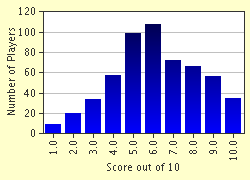Quiz Answer Key and Fun Facts
1. Since this quiz is all about phytochemicals, perhaps we'd better get this question out of the way first. What exactly ARE phytochemicals?
2. Phytochemicals are important in preventing or treating all of the following conditions. With which disease is the role of phytochemicals in prevention particularly strongly associated?
3. Eat your GREEN. Cruciferous vegetables are particularly rich phytochemical sources. Which of the vegetables below is not a member of this group?
4. Eat your RED. LYCOPENE is one of the hardest-working phytochemicals, protecting us against cancer, heart disease, and many other disorders.
What seems to increase the absorption of lycopene by the human body?
5. Eat your ? Since this question is about the phytochemicals from the Allium family, such as ALLYL SULFIDES and AJOENE, what should this question be titled?
6. Eat your RED-PURPLE. Although some antioxidant phytochemicals may be found in food that people don't particularly like (but should probably try anyway), almost everyone likes strawberries, cherries, blueberries and raspberries. Which of the following phytochemicals are particularly abundant in deeply pigmented fruits such as these?
7. You can obtain the phytochemical benefit of red wine without the alcohol by drinking red or purple grape juice.
8. Eat your YELLOW-ORANGE. CAROTENOIDS, of which beta-carotene is the most famous, provide protection against heart disease and cancer and also stimulate immune function. Another important carotenoid is LUTEIN, which has a particularly important function in the prevention of what disorder?
9. You can find phytochemicals in unlikely places...the crunch of your pickle (CALCIUM PECTATE), or the bite of your chili pepper (CAPSAICIN). Which food is incorrectly matched with its antioxidant?
10. What should all of us do to ensure we have plenty of phytochemicals in our diets?
Source: Author
LilahDeDah
This quiz was reviewed by FunTrivia editor
crisw before going online.
Any errors found in FunTrivia content are routinely corrected through our feedback system.

